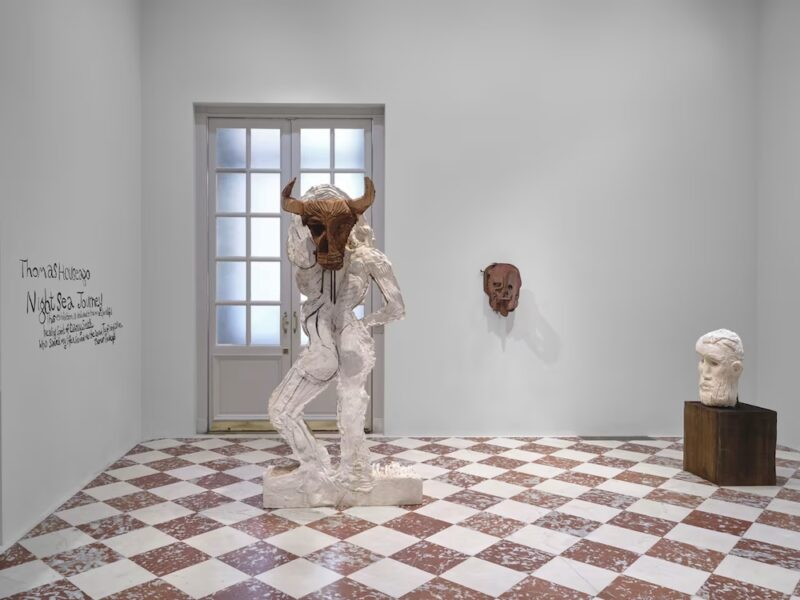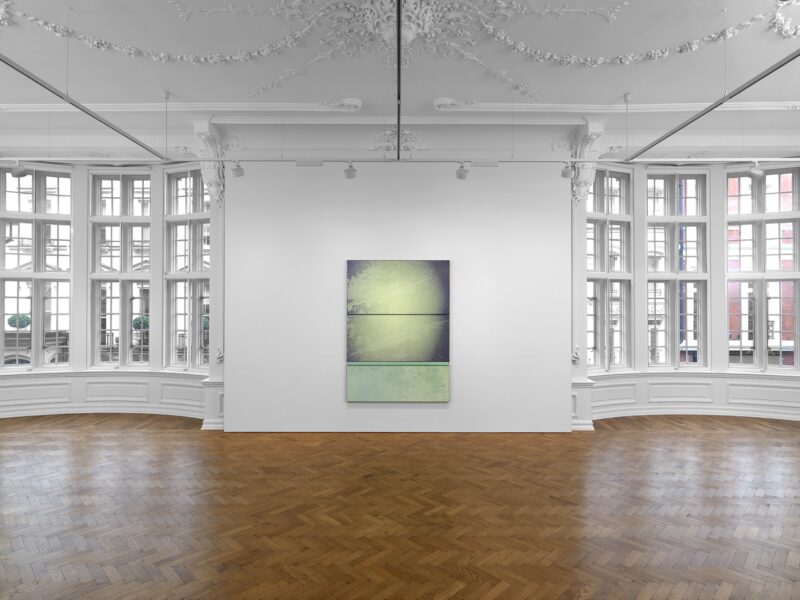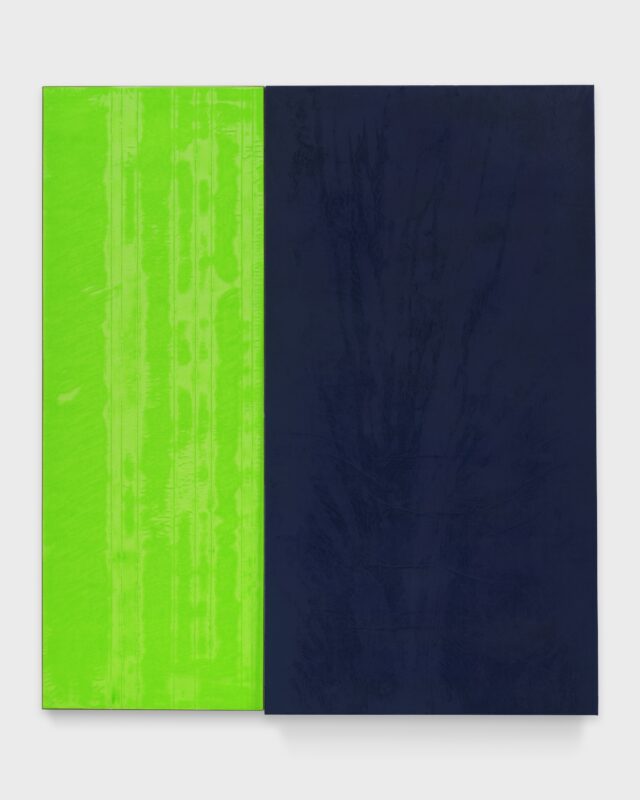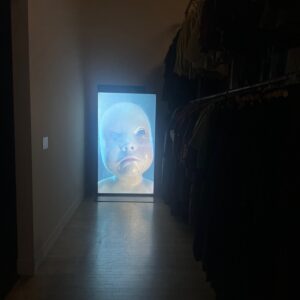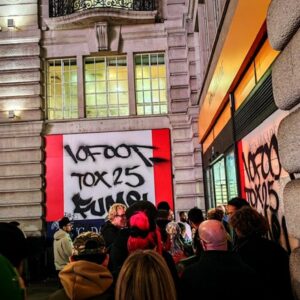Lévy Gorvy Dayan will present Thomas Houseago: Night Sea Journey, a major exhibition that sees the artist pushing boundaries—material and psychological—as he sprawls intricate visions across three floors of the gallery’s Beaux-Arts townhouse.
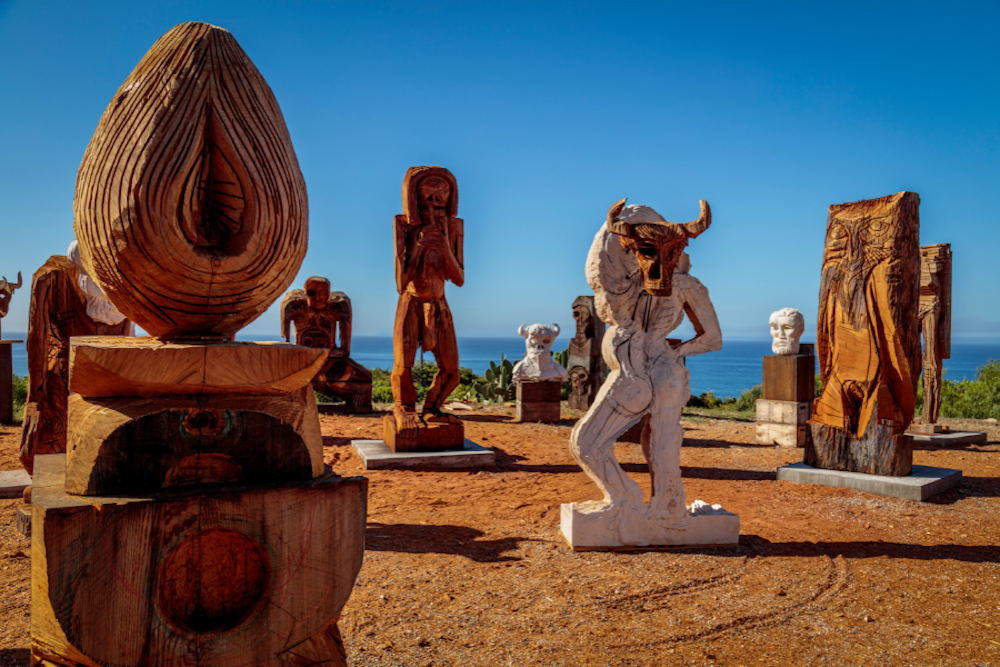
The presentation coincides with Houseago’s completion of a 162-foot-long monumental sculpture, a gift from the artist to the Los Angeles County Museum of Art, and sees him working on a similarly architectural scale. Opening September 9th, 2024, Night Sea Journey marks Houseago’s first exhibition in New York City in ten years. It will showcase new paintings and sculptures that realize the artist’s recent battles with trauma, from which he emerged with a greater understanding of his powers. The result is a raw odyssey from darkness to light that culminates in a symphonic room-spanning tapestry on the gallery’s skylit top floor, created en plein air in Malibu, like the rest of the exhibition.
Thomas Houseago is one of our greatest living sculptors, with each work representing a bold new step for the medium. The fact that the art in this show was made during a period of recovery proves the depths of his talent because it happens to represent some of the finest he has ever made. As one of Thomas’s earliest supporters, I am honored to host his grand return.
founding partner Dominique Lévy
The exhibition reveals the artist’s first body of sculptures since his breakdown in 2019—entities forged in wood, bronze, steel, and plaster, seemingly imbued with a ragged consciousness of their own. Despite a previous avowal that he could not “work small,” the sculptures in Night Sea Journey range in size and theme, from the Stygian to the quotidian. A forbidding, monumental minotaur in bronze greets visitors at the entrance, while, on the second floor, the artist acknowledges a turn to painting with three dimensional still lifes that offer nothing more apparently threatening than a breakfast.
Across his work, Houseago interweaves personal and cultural mythologies with natural elements and processes, transforming his chosen media through applications of intuition, energy, and labor. Here, new and recurring motifs from the artist’s practice—such as chimerical figures, owls, eggs, skulls—cohere in a transformative narrative of struggle, loss, and renewal.
Even the minotaur is revealed to have its own vulnerability. An emblem of metamorphosis, the minotaur represents the tensions shared by great sculpture and human experience—between instinct and reason, beast and man, beauty and perversion. Released from its labyrinth, Houseago’s bronze is a manifestation of the artist’s own spiritual and creative transmutation. It stands amidst a series of large-scale redwood sculptures, including totemic owl and consuming figures, that conjure evocations to an unknown forest against an umbral tapestry that portrays a moonlit abstract landscape, tracing the artist’s lifelong path from his birthplace of Leeds to his present home in California.
On the second floor, a series of Houseago’s egg sculptures in luminous white plaster and redwood will emerge against a deeply textured black tapestry, creating the atmosphere of a darkened grotto. Evoking genesis, as well as human and cosmic existence, the eggs beget a guiding question for the artist: “How do you reconcile the moon, the sun, and our creation, our story that goes on?”
Another gallery on this floor will feature what the artist refers to as a “treehouse,” a liminal site of companionship, safety, and abundance. An oversized tablescape suggests a convivial meal, set with an array of redwood carvings of fruit, bread, silverware, cups, and a coffee pot. Created in the months following the loss of a dear friend, the scene is underscored with a sense of intimacy, mourning, and reflection. The works elaborate the imagery established in the Abundance paintings the artist initiated in 2023, translating their animated, colorful energy into three dimensions. Houseago’s redwood sculptures bear the marks of a vigorous process, including the artist drawing in pastel on the elder tree after hewing the forms with strokes of a chainsaw. More than ever in this room, one feels the artist’s outdoor studio in Malibu, where vantages of the ocean and mountains serve as reminders of nature’s flux.
Night Sea Journey concludes on the fifth floor with an encompassing tapestry of the passages of the sun and moon in a celestial atmosphere, a memorial to those lost and a celebration of those still here. Inspired in part by Edvard Munch’s 1909 mural The Sun, Houseago’s vibrant painting offers an elliptical conclusion to the exhibition’s trajectory.
I love the look of the moon and the sun setting on the ocean. It’s been a lifesaver for me and has immense meaning, it’s the reminder that you are part of a greater, astral mechanism. The sun rises and the moon rises, and the moon is a reflection of the sun that accompanies us through the night…
Houseago
beyond that, everything is sound and light waves, energy.
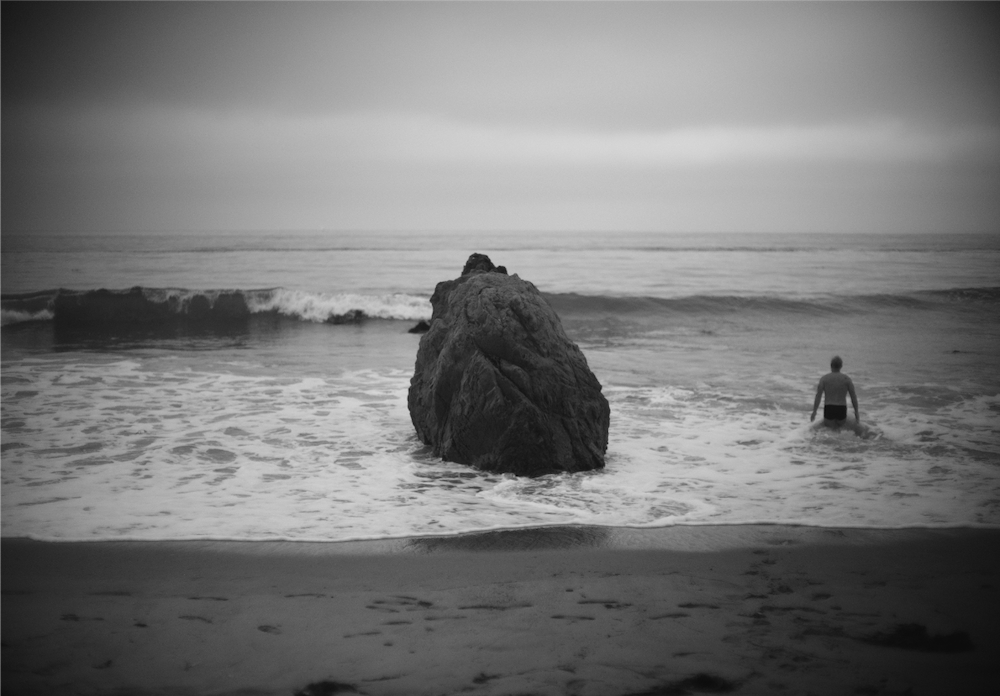
Night Sea Journey will be accompanied by a film on Houseago by the director Andrew Dominik, screened on the first floor for the duration of the exhibition. Dominik’s past works include Chopper, The Assassination of Jesse James by the Coward Robert Ford, Killing Them Softly, Blonde, and documentaries on the musicians Nick Cave and Warren Ellis, This Much I Know to Be True and One More Time With Feeling. The film is produced by Saul Germaine, PJ van Sandwijk, and Paul Kahil.
The exhibition’s extraordinary representation of Houseago’s path grants us access to an honest, vital reckoning with gravity and transcendence. Marking Houseago’s debut with Lévy Gorvy Dayan, Night Sea Journey follows his 2011 solo presentation All Together Now with Dominique Lévy at L&M Arts, Los Angeles.
Thomas Houseago: Night Sea Journey, September 9th – October 19th, 2024 Lévy Gorvy Dayan, New York
About the artist
In the mid-2000s, Thomas Houseago established his career with monumental sculptures of hulking,
skeletal figures and hollow-eyed masks. Employing traditional materials—clay, plaster, wood, and bronze—as well as iron rebar and hemp, he constructs chimerical sculptures that reveal the process of their making. Passages of preparatory drawing in graphite or charcoal remain on the finished work, as do handprints and trowel marks. With raw, rough-hewn surfaces that bridge sculpture and drawing, these figures consider questions of personhood and its relationship to violence, power, and fragility. At once massive and fractured, geological and improvised, imposing and vulnerable, they hold conflicting qualities together. Around 2014, Houseago began working with immersive architectural installations, creating environments characterized by progressive spaces and plaster walls. Soon, he turned to painting, continuing his exploration of the human form and investigating the medium’s capacity for meditation, movement, catharsis, and energetic expression. In recent years, following a period of recovery from trauma, Houseago began painting still-lifes and landscapes. Painted en plein air and in the artist’s studio in Malibu, California, the canvases reflect transcendental and restorative experiences with nature.
Born in 1972 in Leeds, England, Houseago attended Jacob Kramer College, Leeds, where he set out doing performance work (1990–91). In 1994 he received a degree from Central Saint Martins College of Art in London, and from 1994 to 1996 he attended De Ateliers in Amsterdam, where he studied with Marlene Dumas. He lived in Brussels for eight years before moving in 2003 to Los Angeles, where he lives and works today. In 2010, Houseago’s first major museum solo exhibition was organized by the Modern Art Oxford and Ashmolean Museum of Art and Archaeology, Oxford (traveled to Museum Abteiberg, Mönchengladbach, Germany; and Centre International d’Art et du Paysage de l’Ile de Vassivière, Beaumont-du-Lac, France) and he participated in the Whitney Biennial in New York. The Musée d’Art Moderne de la Ville de Paris organized a mid-career retrospective in 2019. Houseago’s work has otherwise been the subject of recent exhibitions at Storm King Art Center, Mountainville, New York (2013); Gemeentemuseum Den Haag, The Netherlands (2014); Le Consortium, Dijon, France (2015); Royal Academy, London (2019); Royal Museums of Fine Arts of Belgium, Brussels (2021); Sara Hildén Museum, Tampere, Finland (2022); Centre Pompidou-Metz, France (2022); and Tank, Shanghai (2023).

